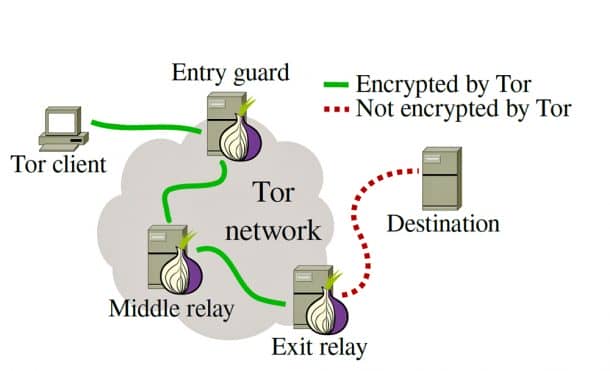The Internet provides an ever-developing and endless source of information and insight for its users. The flip side of the picture, however, is that the internet is also highly invasive. It will come as no surprise to discover that Internet Privacy is a growing concern not only for individuals but also for corporations and governments. To provide a sense of peace of mind, many users will adopt various methods, which claim to provide greater privacy on the internet. However, since many of these services may not provide exactly what they claim to be offering, today we will put one such anonymity service to the test: Tor.

Before we dive into the details of the browser known as Tor, it is pertinent to understand the general ways in which internet security can become compromised. The usual user privacy, more formally known as internet surveillance, is carried out via internet traffic analysis. Information exchange takes place in the form of data packets on the internet. Each packet consists of two parts: a Payload and a Header. The Header contains the routing information, e.g. the source and destination IP addresses, while the Payload contains the exchanged information.

If a user encrypts the exchanged information, the header is still able to reveal sensitive information such as the sender, recipient, time, location, and the operating system used to send the Payload. Not only can the recipient look into the header of the sender, but so can the certified intermediaries such as the user’s internet service provider, and even other unauthorized groups. In addition to this basic eavesdropping, more severe forms of invasion can occur, including the mining and statistical analysis of patterns in the traffic of a particular site.
Tor functions by encrypting the payload, removing the header, utilizing an encrypted address, and finally sending the packet through a wide-spread network of volunteering servers known as relays, after which the packet arrives at destination. This roundabout manner of delivery can be compared to a person taking alternative routes whilst walking home in order to divert a stalker on the street.

The Tor Project serves to enhance the anonymity of the user, such that they can access and share information on public networks whilst concealing both their identity and the identity of their loved ones. Tor also offers access to new sites, instant messaging services, and locally blocked content. Tor enables users can publish websites without the concern of disclosing their location or the location of the site, and offers protection to socially sensitive communication.
It should be noted, however, that Tor doesn’t offer complete end-to-end encryption. It offers encryption from the sender to the last relay, and then that relay will send the data unprotected to its final destination. In the case that that exit node is malicious, then all unencrypted data that Tor sends through that relay could be intercepted. Hence while Tor makes the tracking difficult, is does not make it impossible. In practice, it is a good idea to periodically change circuits, or to combine use of Tor with the use of Virtual Private Networks (VPNs). Another point to consider here is that routers can be manipulated for anonymity while bridges cannot be. Tor does nothing to prevent the leak information when it comes to the storage of cookies or use of javascript. Therefore, accomplishing complete anonymity using Tor alone may not be the ultimate solution.



Privacy is every Americans right. Freedom of speech and freedom of the internet,. We must keep the internet free from the government. Stop the Government from spying on everybody. So stop using the spying search engines, us the unbiased no tracking search engine that owns its own search results Lookseek.com try it have a nice day